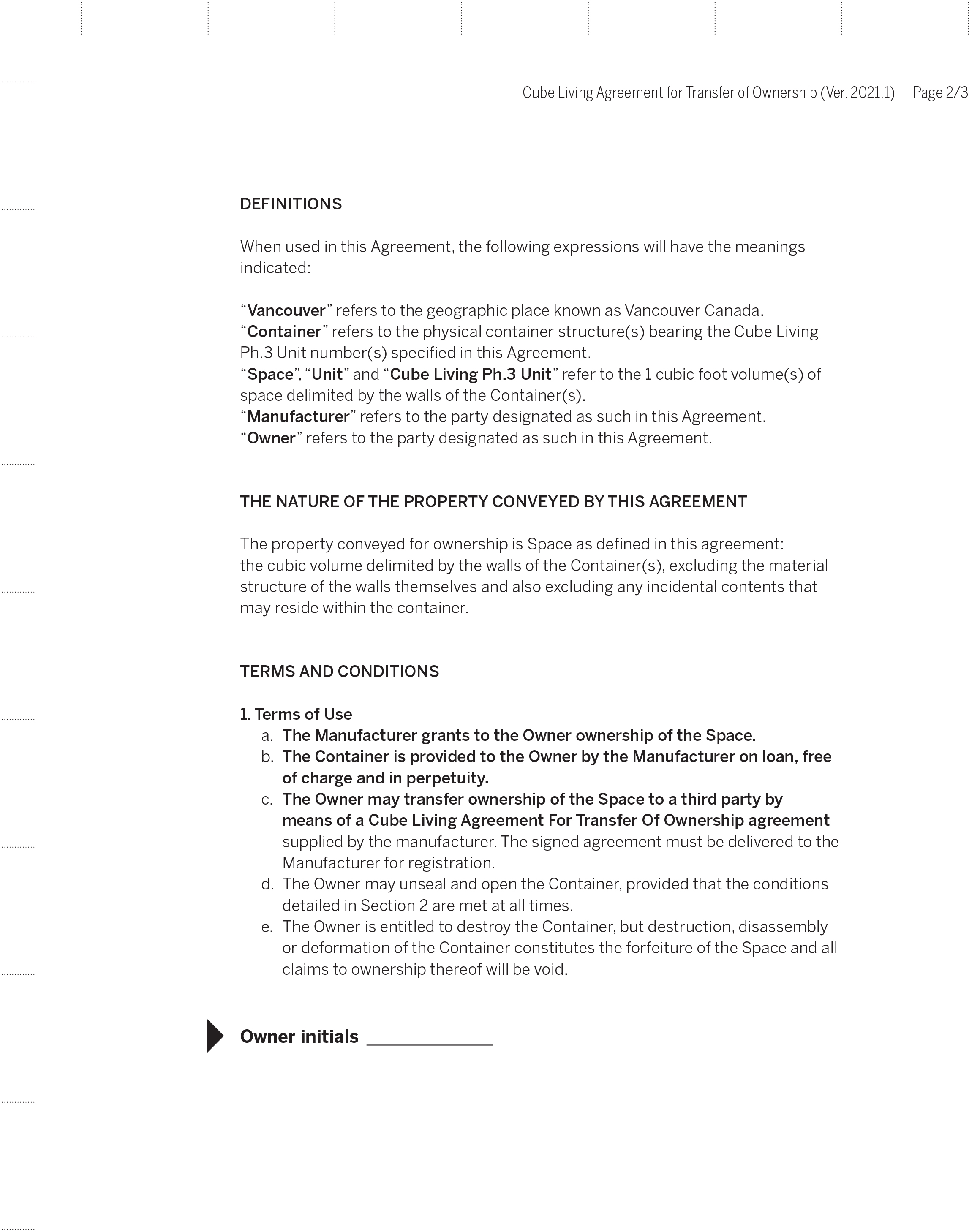About the Artist
An artist and designer based in Vancouver Canada, on unceded Musqueam, Squamish, and Tsleil-Waututh territories. His work employs printed matter, performance, sound, olfaction and informal pedagogy to explore the perception of space, landscape, and the air as speculative objects. His projects have been exhibited in Canada, USA, South Korea and Switzerland.
Alex is also a co-founder of the Vancouver Design Nerds Society, an organization created in 2004 that has operated in Vancouver, Victoria, Nanaimo, Seattle, and Toronto to teach design thinking and facilitate active public engagement in the production of material culture and urban environments.
About the Works
Cube Living is an ongoing critical design project that investigates how space is produced in cities, proposing that urban space exists primarily as a social ontology reified through agreements and transactions within a network of agents. In such a system material considerations are secondary and supply is determined mainly by network dynamics and relations of power that are defined through contractual documents and enforced by social institutions.
The current iteration of the project, Cube Living Vancouver, investigates the city of Vancouver as a store of symbolic and financial capital that has become increasingly disconnected from use value and real economic production. It revolves around the production of a series of 1-cubic-foot spatial property units defined by the boundaries of their containers and the terms of their sales contract. They are priced at the median cost of Vancouver residential real estate and the total number of units is limited to 1200, the volume of a standard 150 square-foot downtown micro suite. Pre-sale units are now available for purchase at cubeliving.ca and can be shipped abroad or stored locally through a property management service.
Instead of perpetuating the illusion that urban space is a finite zero-sum resource Cube Living creates a kind of space that is explicitly additive. Through the terms of its ownership agreement Cube Living units co-exist next to, overlapping with, and inside of other spaces. Expanding on antecedent practices of speculative paper architecture, Cube employs printed matter as a material substrate for creating a network of physical spaces and social relations.



